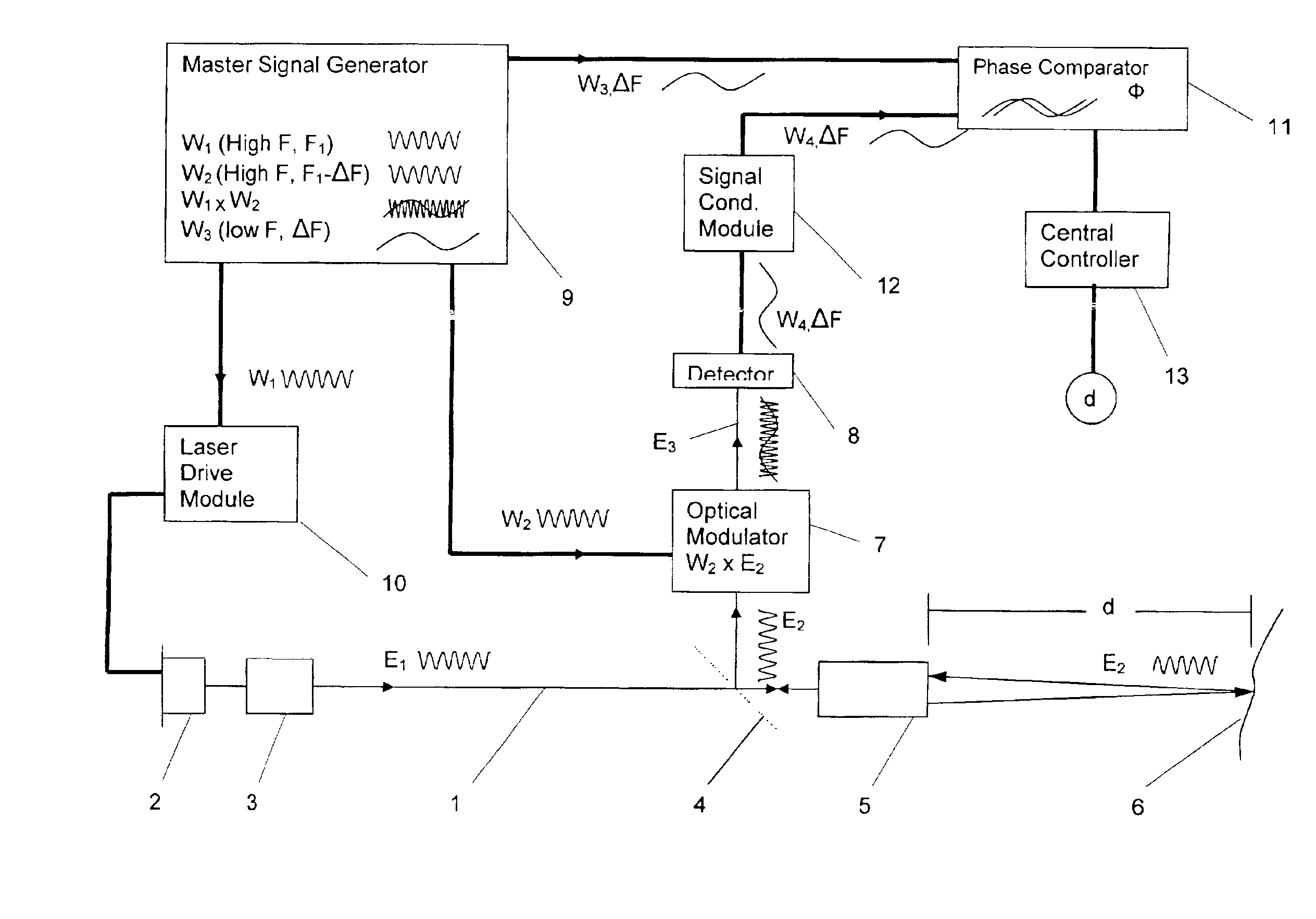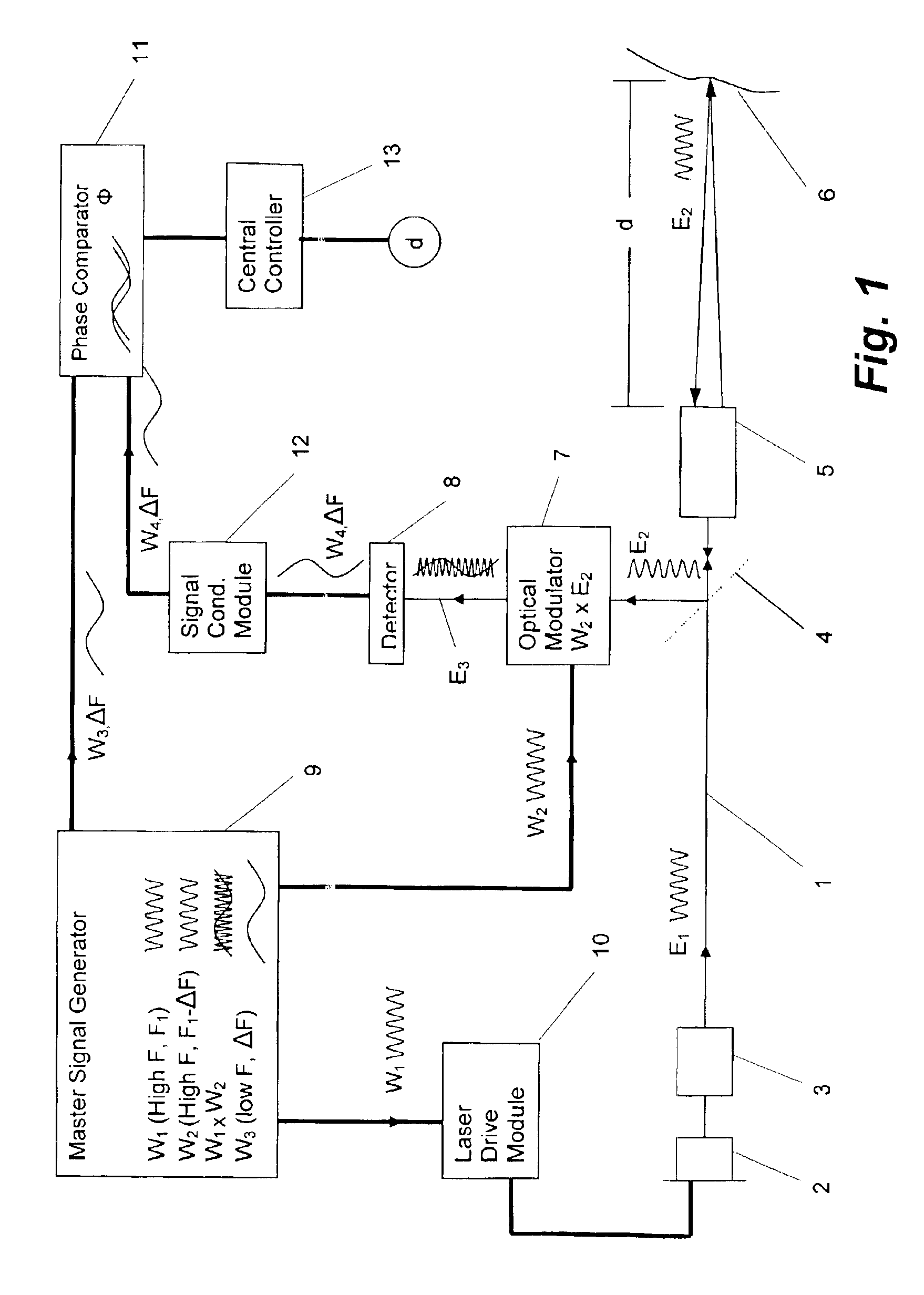Optical sensor for distance measurement
- Summary
- Abstract
- Description
- Claims
- Application Information
AI Technical Summary
Benefits of technology
Problems solved by technology
Method used
Image
Examples
example 1
With reference to FIGS. 3-8, a simplified practical theoretical example is provided in which a transmitted beam having waveform E1 at a frequency F1 of 1 GHz, is directed at a remote surface 6. A reflected beam E2, retaining frequency F1, is modulated using a modulating waveform W3, at frequency F2, for creating a mixed electromagnetic radiation signal E3 before being received at the detector 7. The frequency F2 of the modulating beam W3 was chosen to result in a difference frequency ΔF which more practically and graphically illustrates the resulting phase-shift φ. BasicallyE1=Sin(2πF1t)where F1=1 GHz, no DC offset; andE2=Sin(2πF1t−φ)where E2 is phase-shifted E1 due to round trip 2d;φ=4πF1d / c, c=3×108 ms−1; andd=(37.5+n*150)mm yields φ=π / 2 radians
The transmitted and reflected waveforms E1,E2 are shown in FIG. 3.
According to the present invention, the modulating waveform W3 at frequency F2 is applied to the reflected waveform E2. In an actual application applied for high accuracy, a ...
example 2
With reference to FIG. 9, a simple in-line experimental arrangement was used to validate measurement principles of the present invention.
A low power 1 GHz laser beam, emulating that reflected back from a rough object or surface 6 was modulated at a frequency difference of 500 Hz. The distance d of a fiber emitter 30 from a fiber receiver 31 was precisely varied using a linear translation stage. Implementing the present invention to determine distance d, the detector 8 measured phase-shifts φ with a precision of 1.2 degrees per millimeter of movement. The detector 8 achieved this precision without the need to react to frequencies greater than 500 Hz. This precision was achieved because the phase-shift can now be measured while still implementing a 1 GHz output beam having a wavelength of (0.3 meters) of 300 mm. Movement resolution at 1.2 degrees is 1.2 / 360*300 mm=1 mm. In contradistinction, however impractical, an optical detector 8 capable of direct measurement of phase-shift φ from...
PUM
 Login to View More
Login to View More Abstract
Description
Claims
Application Information
 Login to View More
Login to View More - R&D
- Intellectual Property
- Life Sciences
- Materials
- Tech Scout
- Unparalleled Data Quality
- Higher Quality Content
- 60% Fewer Hallucinations
Browse by: Latest US Patents, China's latest patents, Technical Efficacy Thesaurus, Application Domain, Technology Topic, Popular Technical Reports.
© 2025 PatSnap. All rights reserved.Legal|Privacy policy|Modern Slavery Act Transparency Statement|Sitemap|About US| Contact US: help@patsnap.com



